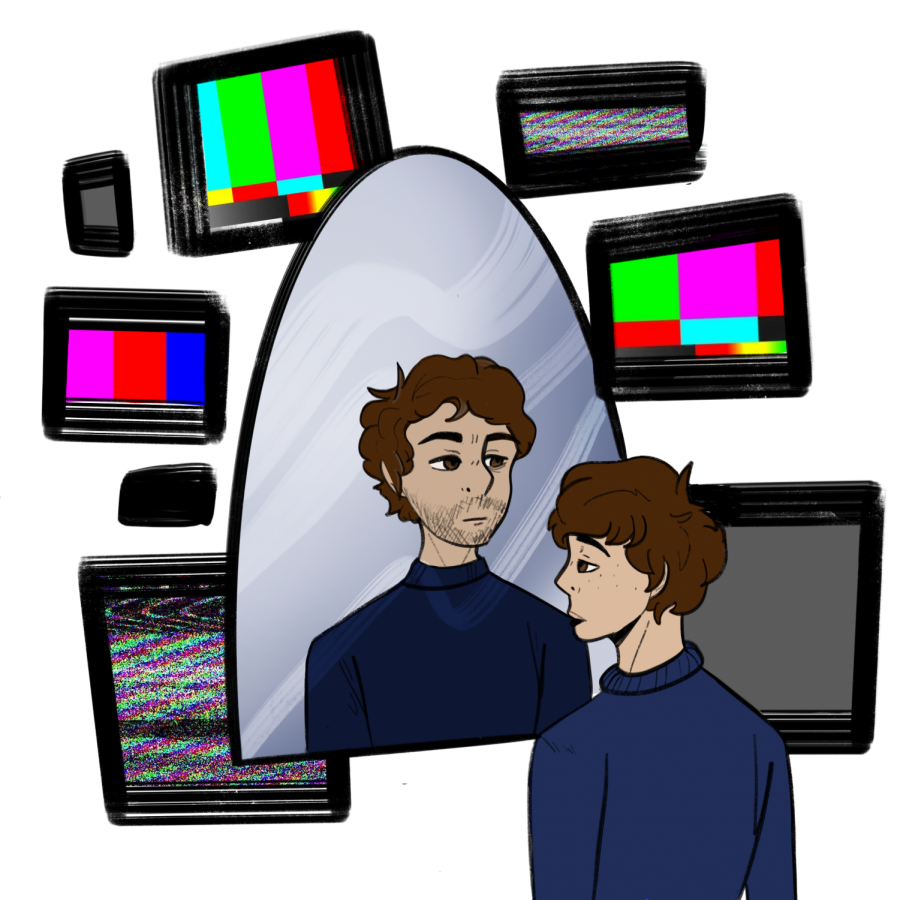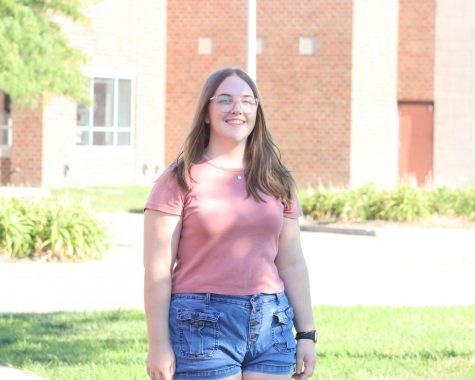Teens deserve better on-screen representation
High school students are portrayed unfairly in media
Movies and TV shows often cast adults to portray high school students. This lack of accurate representation warps teenagers’ self-image.
October 26, 2021
When the film adaptation of the Tony award-winning Broadway musical “Dear Evan Hansen” came out, fans were disappointed. The commentary on mental health lacked nuance, the acting was too theatrical to play well on TV, the main character was unsympathetic. The biggest issue for audiences, however, was Ben Platt’s age. The actor played the 17-year-old title character in the Broadway musical and reprised his role for the movie — at the age of 28.
The “Dear Evan Hansen” controversy is not the first of its kind. Hollywood routinely casts actors in their 20s and even 30s to play teenagers. An investigation by Broadly found that, more often than not, there is a significant age gap between actors and their on-screen characters. In “Breakfast Club,” the average difference was 4.4 years. In “Pretty Little Liars,” the gap jumps to 5.6 years, and in “Glee,” it hits eight years. Generally, this casting choice is simply a convenient workaround to child labor laws that would slow down production as they limit how long minors can be on set.
Still, the consequences are profound. When adults play teens, it perpetuates an unrealistic body image — the perfect skin, developed bodies, glamorous hair, expertly applied makeup and designer clothes on-screen do not reflect what most teens see when they look in the mirror. These impractical images affect not only how teenagers see themselves, but also how adults see them. As the Representation Matters movement has grown, so has the body of research that shows the negative effects of inaccurate or incomplete media representation. To combat this, Hollywood needs to start hiring teens to play teens.
However, hiring younger actors will not be enough to fix the problem. Regardless of who plays them, high school students are portrayed unfairly in the media. When we’re not being pigeonholed into narrow groups, we’re reduced to two-dimensional tropes. Stereotypes are rampant: angsty brats, vape-addicted delinquents, Instagram-obsessed influencer wannabes and pretentious jocks. But 13% of the global population cannot be cleanly divided into the typical cliche cliques popular in films like “Mean Girls” and “High School Musical.” America’s youth is the most diverse group in the country. Like everyone else, we are complicated and hard to define.
Despite the diversity of youth, TV and movies portray teens as shallow and interested in nothing but drugs, sex and romance. In shows like “Gossip Girl” and “Riverdale,” high schoolers are constantly caught up in love triangles and messy dating drama. In “13 Reasons Why,” the nuanced issue of mental health is dumbed down in favor of storylines about drug abuse and teen pregnancy. Some shows, including “Degrassi,” “One Tree Hill” and “Gossip Girl,” go so far as to depict teen weddings. However, today’s youth are increasingly turning away from that behavior. A survey from Child Trends found that almost half of high school seniors avoid dating while a study from Berenberg Research shows that Gen Z is drinking alcohol 20 percent less than millennials. These departures from harmful behaviors like underage drinking might be a result of changing social norms, but they also might have something to do with the fact that teens have access to social media, where people their age are sharing more complete, less stereotyped versions of themselves. In some ways, having new platforms for representation is freeing teens from conforming to the tropes depicted on TV and is allowing them to make their own decisions.
With evolving social norms, teens are adapting. The tired tropes of the past few decades don’t apply to them in the same ways. Data from The Economist shows that teen pregnancies, drug addictions and dropout rates are falling while mental illness and school rigor is climbing. College admissions are getting tougher, high school is getting more competitive, the climate is getting warmer, and teens are rising to meet these challenges. We are more involved with activism, participate in more extracurricular activities and get better grades. As a generation, we are far more accomplished and far more motivated than most modern TV shows and movies would suggest. Each generation has a unique set of challenges and triumphs, and the media should evolve to reflect that.
Modern media does not reflect the unique realities of young people. It’s time to let go of the exaggerated tropes and start creating media that showcases the experiences of teens in a realistic way. If today’s TV shows were to display the realities of peer pressure, mental illness, drug use, strict parents, social media and romance, teens might feel empowered to move past the stereotypes and embrace their individual experiences.
Hollywood is always going to show what sells, and it seems that, for now, showing teens solving murders in a small East Coast town or hunting for treasure in the Outer Banks of North Carolina is what brings in the money. Still, it’s time that scriptwriters and casting directors break away from the stereotypes. High school is one of the most confusing, exciting and complicated times of our lives, and we deserve media representation that accurately reflects that.







